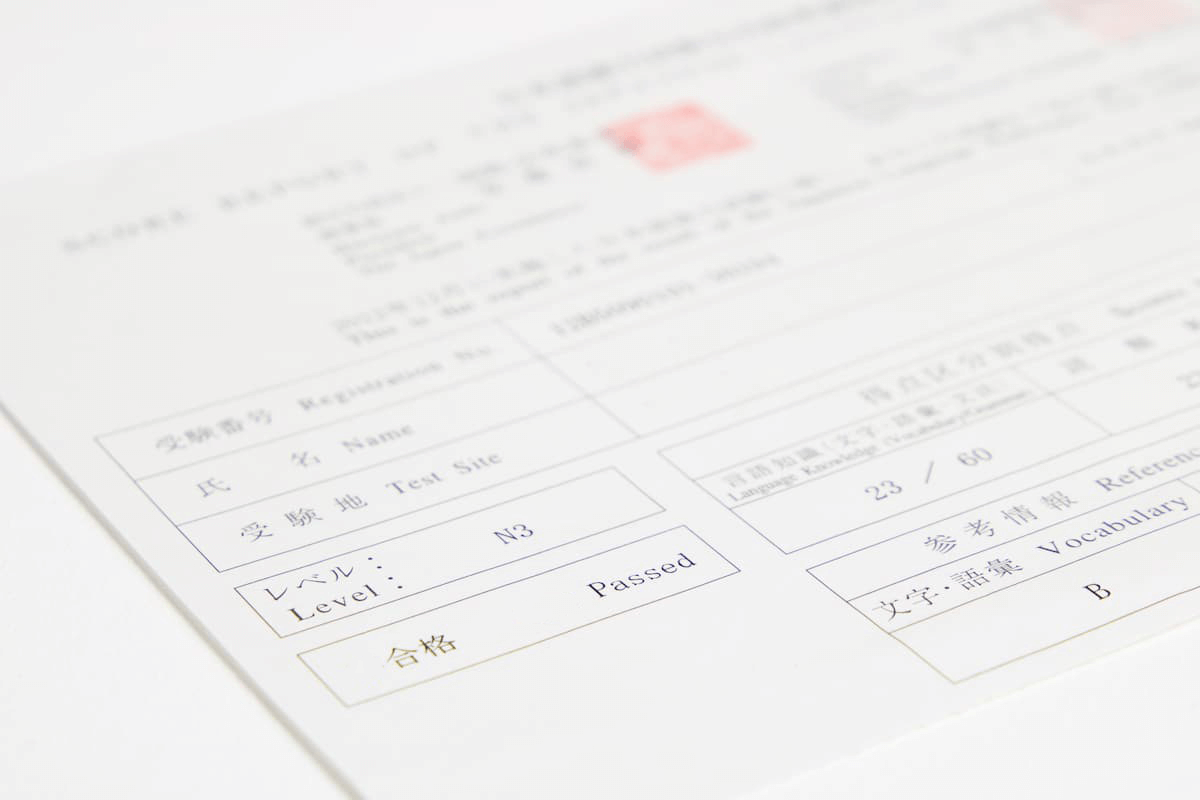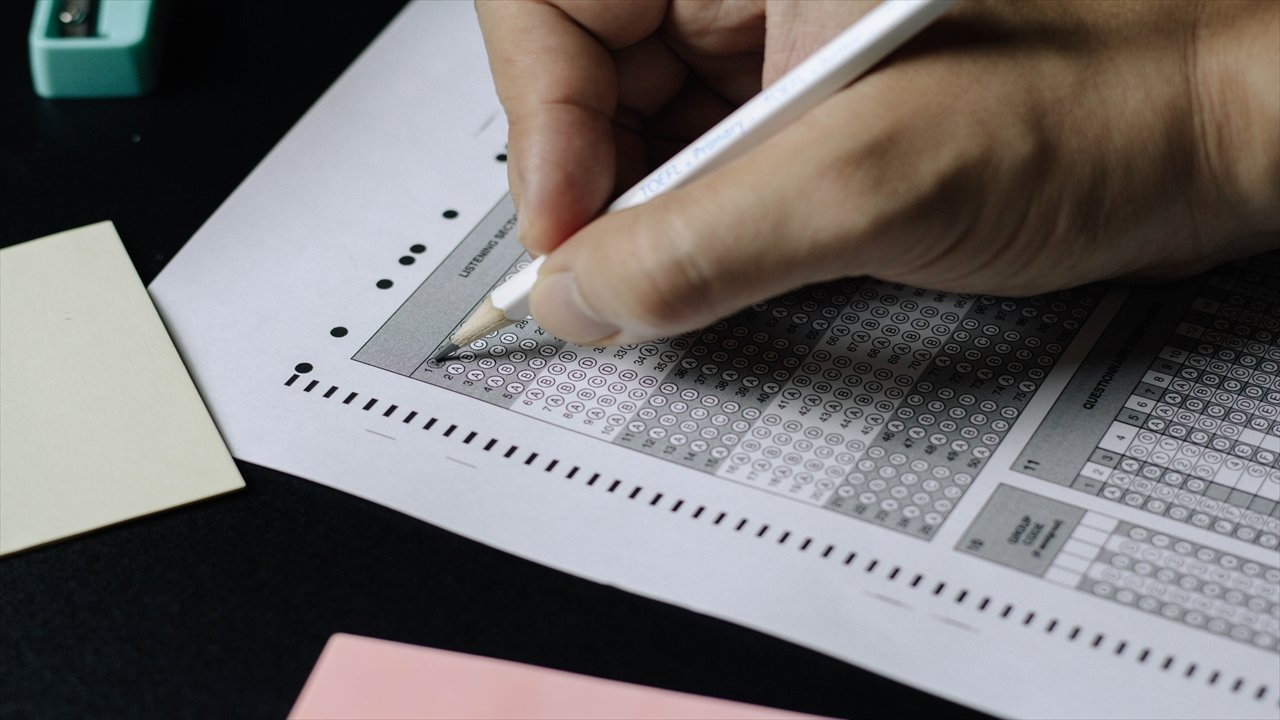What is the Japanese Language Proficiency Test for foreigners? Introducing the different types and levels

Hello, this is Marukura from JAC (Japan Association for Construction Human Resources).
Do you know what kind of Japanese language proficiency tests foreigners take? The most well-known is the JLPT, but there are other Japanese language proficiency tests as well.
We will introduce the Japanese Language Proficiency Test in detail, so please read on if you have any of the following concerns:
"Why should I take the Japanese Language Proficiency Test?"
"What types of tests are there?"
"I want to know the level of the Japanese Language Proficiency Test"
"I want to know what level I need to be."
What is the Japanese Language Proficiency Test for foreigners to take?
The Japanese Language Proficiency Test is a test to determine how well foreigners who do not have Japanese as their native language can understand Japanese.
This can also be one of the criteria that Japanese companies use when hiring foreigners.
In some cases, you may also be required to take the Japanese Language Proficiency Test. In order to work under Specified Skills visa, you must take the Japanese Language Proficiency Test.
For example, if a person who holds a medical license in a foreign country wants to take the Japanese national medical examination, they must take the Japanese Language Proficiency Test and receive the required level of certification.
Benefits of taking the Japanese Language Proficiency Test
There are also some benefits to taking the Japanese Language Proficiency Test.
It can be a school credit, a graduation qualification, or a social credential.
Also, when you work in Japan, you may get a raise or find it easier to get the job you want.
There are also some advantages in terms of Japanese immigration control.
Those who pass the N1 and N2 levels of the Japanese Language Proficiency Test (JLPT) are given preferential conditions according to the points they receive under the "points-based immigration preferential treatment system for highly-skilled professionals."
Preferential treatment allows you to engage in activities that require multiple residence statuses and gives you a five-year residence period.
If you want to know more about the details of the immigration control preferential treatment under the point system for highly skilled human resources, please visit the Immigration Services Agency of Japan website.
Immigration Services Agency of Japan "What kind of preferential treatment can I receive?"
What types of Japanese Language Proficiency Tests do foreigners take?
There are several types of Japanese Language Proficiency Test.
You must choose an exam that suits your purpose and qualification needs.
The most well-known Japanese language proficiency test in Japan is the Japanese Language Proficiency Test (JLPT).
Japanese Language Proficiency Test (JLPT)
The Japanese Language Proficiency Test (JLPT) can be taken in July and December.
And you can take the exam in most cities in Japan.
You can also take the exam overseas if there is a testing center available.
Foreigners with Japanese nationality can also take the exam if their native language is not Japanese.
There are no age restrictions.
The BJT (Business Japanese Proficiency Test) is often used as a Japanese language proficiency test that focuses on Japanese used in the workplace.
BJT Business Japanese Proficiency Test
There are other types of Japanese Language Proficiency Test, such as the following:
- J.TEST Practical Japanese Test
- Japanese Language NAT-TEST
- STBJ Standard Business Japanese Test
- TOPJ Practical Japanese Proficiency Test
- J-cert: Japanese for everyday life and occupations
- JLCT Japanese Language Proficiency Test for Foreigners
- PJC Practical Japanese Communication Test
- JPT Japanese Language Proficiency Test
These Japanese Language Proficiency Tests have different levels.
Below is a detailed explanation of the levels of the exam.
There are different levels of the Japanese Language Proficiency Test that foreigners take

As mentioned earlier, the most famous Japanese Language Proficiency Test is the Japanese Language Proficiency Test (JLPT).
The Japanese Language Proficiency Test (JLPT) assesses reading and listening skills.
There is no "speaking ability" test.
There are five certification levels, from N1 (difficult) to N5 (easy).
A simple explanation of the JLPT levels is as follows:
| Certification Guidelines | |
| N1 | Able to understand Japanese in a variety of situations |
| N2 | Able to understand everyday Japanese and somewhat difficult Japanese. |
| N3 | Able to understand everyday conversation to some extent |
| N4 | Able to understand basic Japanese |
| N5 | Able to understand basic Japanese to some extent |
| Reading Ability | |
| N1 | Able to understand difficult content such as newspaper editorials |
| N2 | Able to understand relatively simple explanations in newspapers and magazines |
| N3 | Difficult sentences can be understood by paraphrasing them |
| N4 | Able to understand texts written in kanji on familiar topics |
| N5 | Able to understand set phrases including hiragana, katakana, and commonly used kanji |
| Listening skills | |
| N1 | Understand everyday conversations at a natural speed |
| N2 | Able to understand coherent conversations at a natural speed |
| N3 | I can understand most of the content and relationships of people if the conversation is slowed down a little. |
| N4 | If you speak a little more slowly, I can understand most of the content. |
| N5 | If you speak the things you often hear slowly in short conversations, you will be able to hear the information you need. |
The most difficult level, N1, is required to take national exams such as for doctors, the Japanese Licensed Practical Nurse exam (which can be taken by those who have graduated from nursing schools overseas), and for care workers.
It is said that even Japanese people find N1 difficult.
Depending on the company you want to work for and the type of job you want to do, you may need to obtain N1 certification.
If you have passed N2 or N3, you will be able to converse without any problems both in your everyday life and at work.
N4 and N5 are levels where you can read Japanese sentences using simple kanji and understand everyday conversations at a slow speed.
Candidates for nurses and care workers coming to Japan from Indonesia, the Philippines, and Vietnam under the Economic Partnership Agreement (EPA) need to be certified at around N5 for Indonesia and the Philippines, and at N3 or above for Vietnam.
Specified Skilled Worker (i) in the construction field requires level N4.
So, what level of Japanese can you listen to, read, and speak at the N4 level?
Let me introduce some example questions from the Japanese Language Proficiency Test (JLPT) at N4 level.
① の ことばは どう かきますか。1・2・3・4から いちばん いい ものを ひとつ えらんで ください。
ふねで にもつを おくります。
1、近ります
2、逆ります
3、辺ります
4、送ります
② のぶんと だいたい おなじ いみの ぶんが あります。1・2・3・4から いちばん いい ものを ひとつ えらんで ください。
パスポート ばんごうを しらせて ください。
1、パスポート ばんごうを うつして ください。
2、パスポート ばんごうを なおして ください。
3、パスポート ばんごうを きめて ください。
4、パスポート ばんごうを おしえて ください。
source:日本語能力試験公式ウェブサイト「問題例に挑戦しよう」N4問題例:言葉知識(文字・語彙)
What level is JLPT level N4 in other exams?
The most well-known Japanese Language Proficiency Test is the JLPT, but there are many other types of tests.
We will introduce other exams that are at a level equivalent toN4 of the Japanese Language Proficiency Test (JLPT).
- J.TEST: D-E level test score of 350 or more
- NAT-TEST: Level 4 and above
- Standard Business Japanese Test: BJ4 and above
- TOPJ: Beginner A-4 and above
- J-cert: Basic Course A2.2 (Intermediate level) or above
- JLCT: JCT4 and above
- PJC Bridge: B Level
- JPT: 375 points or more
Summary: Foreigners may be required to take the Japanese Language Proficiency Test to work in Japan
The Japanese Language Proficiency Test is a test to see how well foreigners understand Japanese.
The most commonly taken Japanese Language Proficiency Test is the JLPT, but there are many other Japanese Language Proficiency Tests.
In order to work in Japan, there are cases where you absolutely must take the Japanese Language Proficiency Test.
If you have received a certain level of certification in the Japanese Language Proficiency Test, you will also have the benefit of receiving preferential treatment.
The most well-known Japanese Language Proficiency Test in Japan, the JLPT, has levels N1 to N5.
Also, the level required varies depending on the company and the job.
About us, JAC
JAC(Japan Association for Construction Human Resources)is an organization that supports all Specified Skilled Workers working in the Japan construction industry. We work with companies that accept Specified Skilled Workers to create a work environment that is easy for everyone to work in.
We're also taking the exams you need to become a Specified Skilled Workers!
And JAC has received many requests for job offers from companies that want Specified Skilled Workers to work for.
Specified Skilled Workers Wanted! Job Listings
For those of you who want to work in Japan using Specified Skills, we are introducing jobs that match your occupation and aspirations!
If you have any problems, please feel free to contact us!



